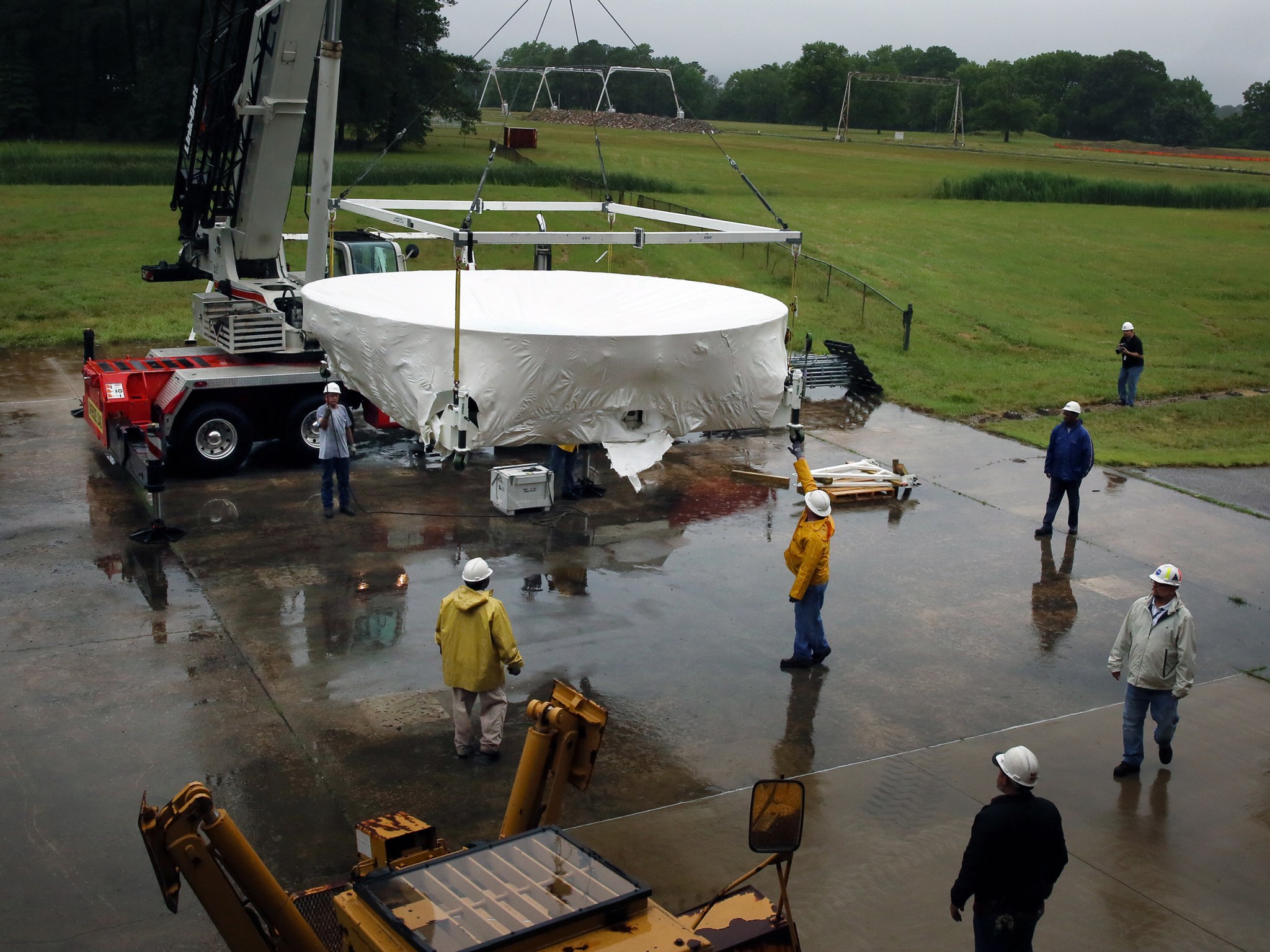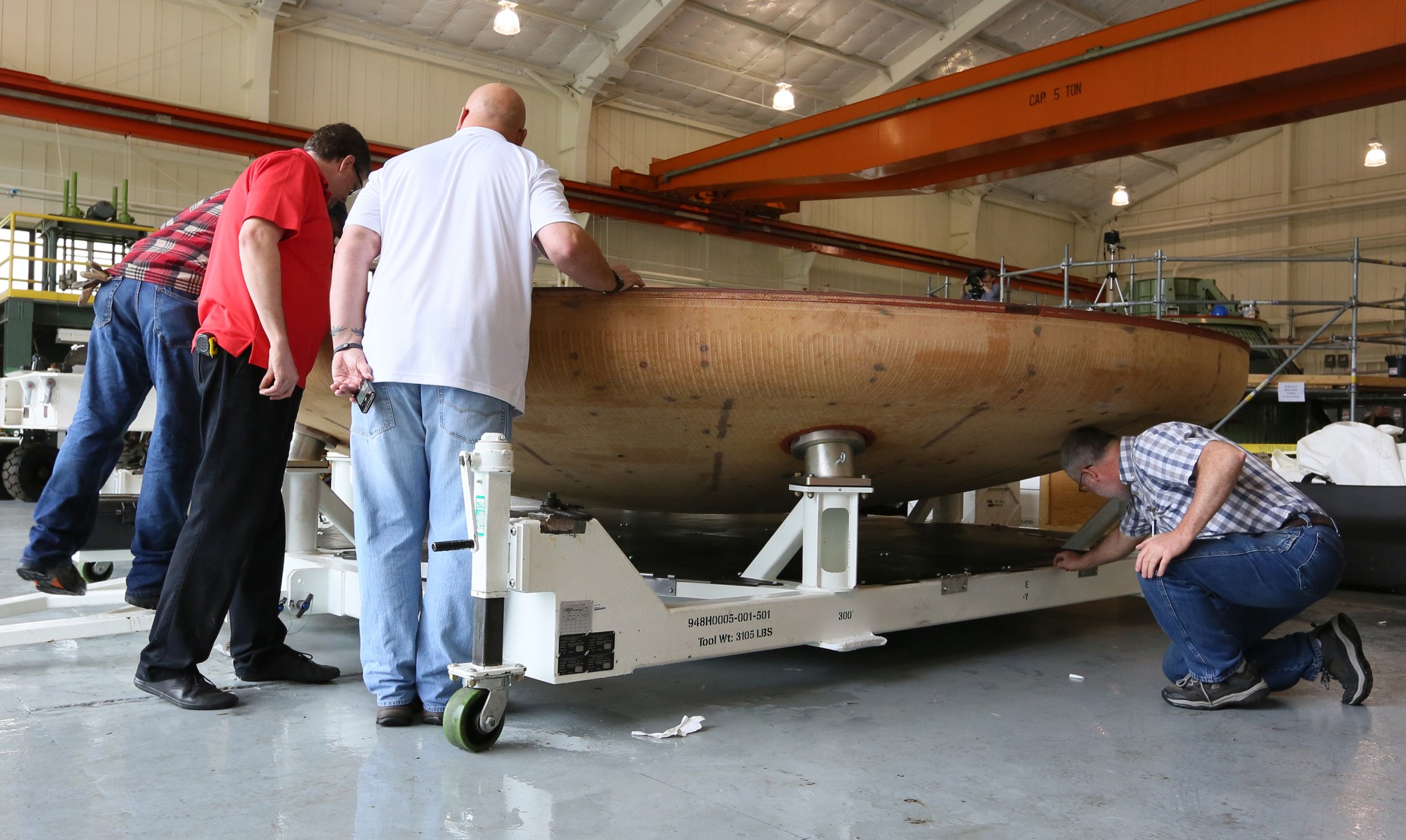

The NASA Orion heat shield that was critical to the success of the spacecraft’s first flight last December will be available for viewing Tuesday, June 9, at 10:30 a.m. EST, at NASA’s Langley Research Center in Hampton, Virginia.
To attend, reporters must contact Sasha Congiu at 757-272-9859 or sasha.r.congiu@nasa.gov by 3:30 p.m. EST on Monday, June 8. NASA subject-matter experts will also be available for interviews.
The 16.5-foot-diameter heat shield will be integrated onto a high-fidelity Orion mockup later this year and undergo water-impact tests at Langley’s Hydro Impact Basin next spring. Water-impact tests will simulate landing scenarios for different velocities, parachute deployments, wave heights and wind conditions the spacecraft may encounter when it splashes down in the Pacific Ocean during future Orion missions.
Prior to its arrival, engineers from several NASA centers removed samples and segments of the heat shield’s heat-deflecting material, called Avcoat, at the agency’s Marshall Space Flight Center in Huntsville, Alabama. The samples will be used to examine the char layers and degree of erosion during Orion’s first mission.
To see images of the heat shield’s arrival at Langley, visit:
To learn more about Orion, visit:
For information about NASA Langley, visit:
-end-
NASA Langley news releases are available automatically by sending an e-mail message to langley-news-request@lists.nasa.gov with the word subscribe in the subject line. You will receive an e-mail instructing you to reply to confirm the action. To unsubscribe, send an e-mail message to langley-news-request@lists.nasa.gov with the word unsubscribe in the subject line.
Sasha Congiu
757-864-5473/757-272-9859
sasha.r.congiu@nasa.gov

























